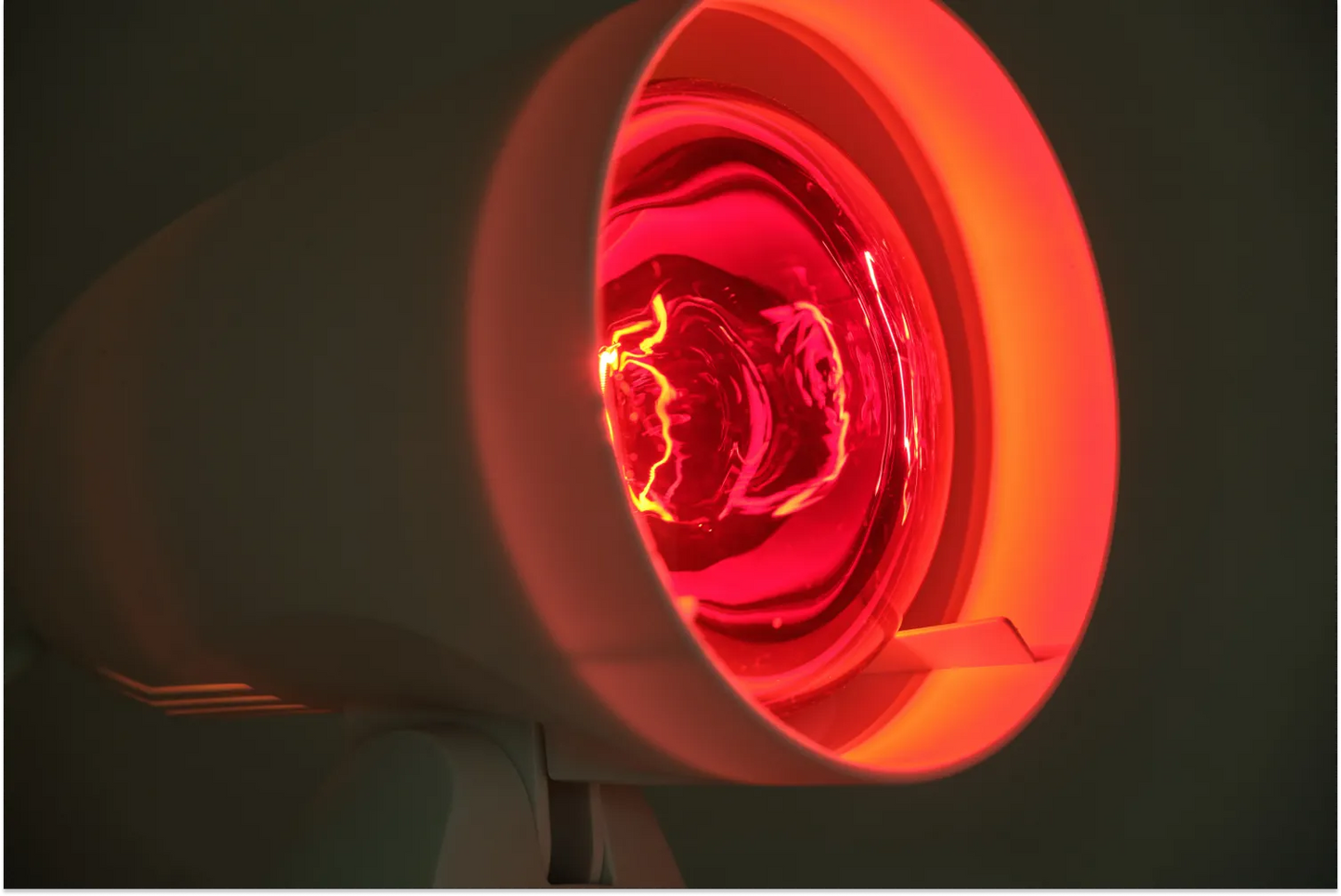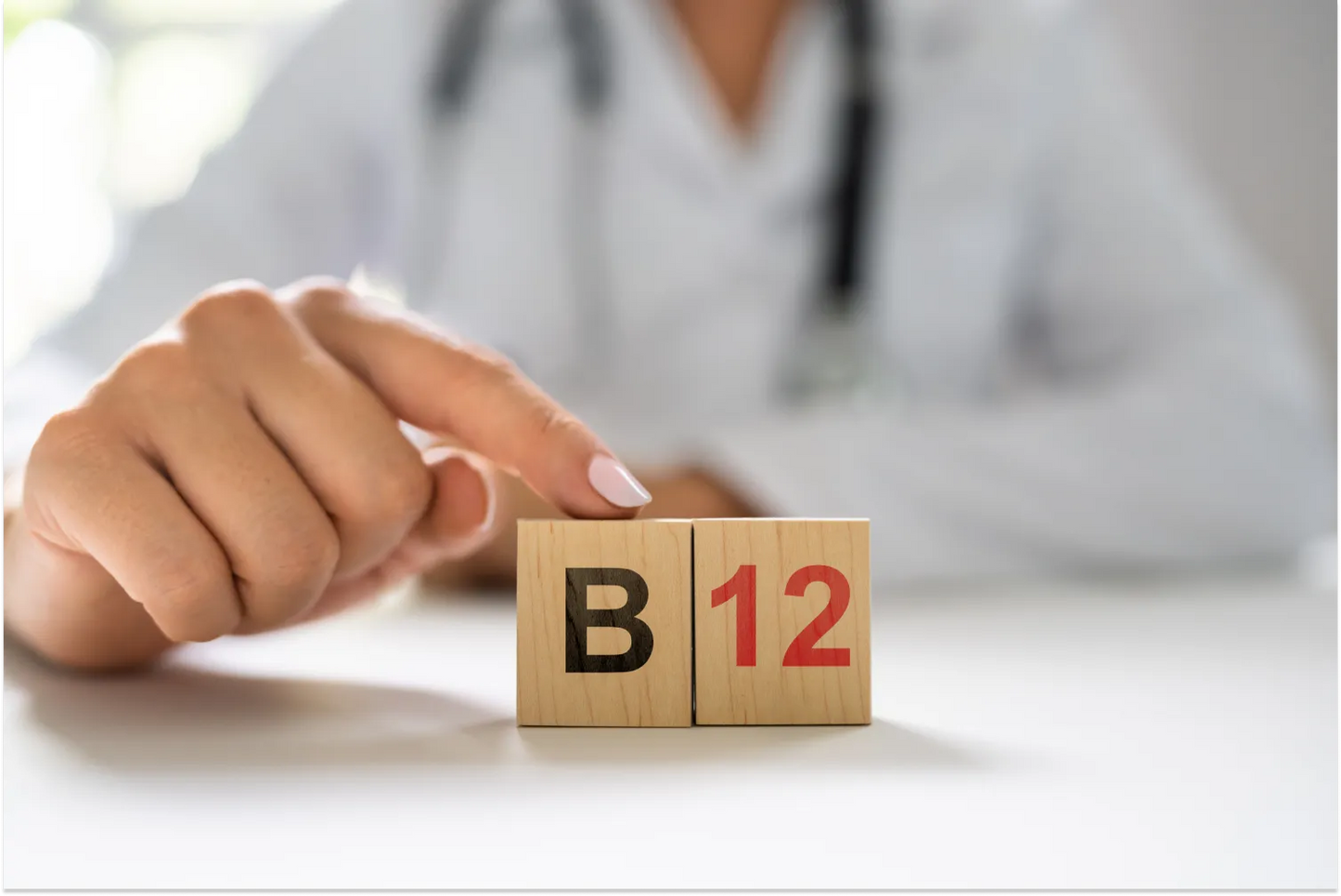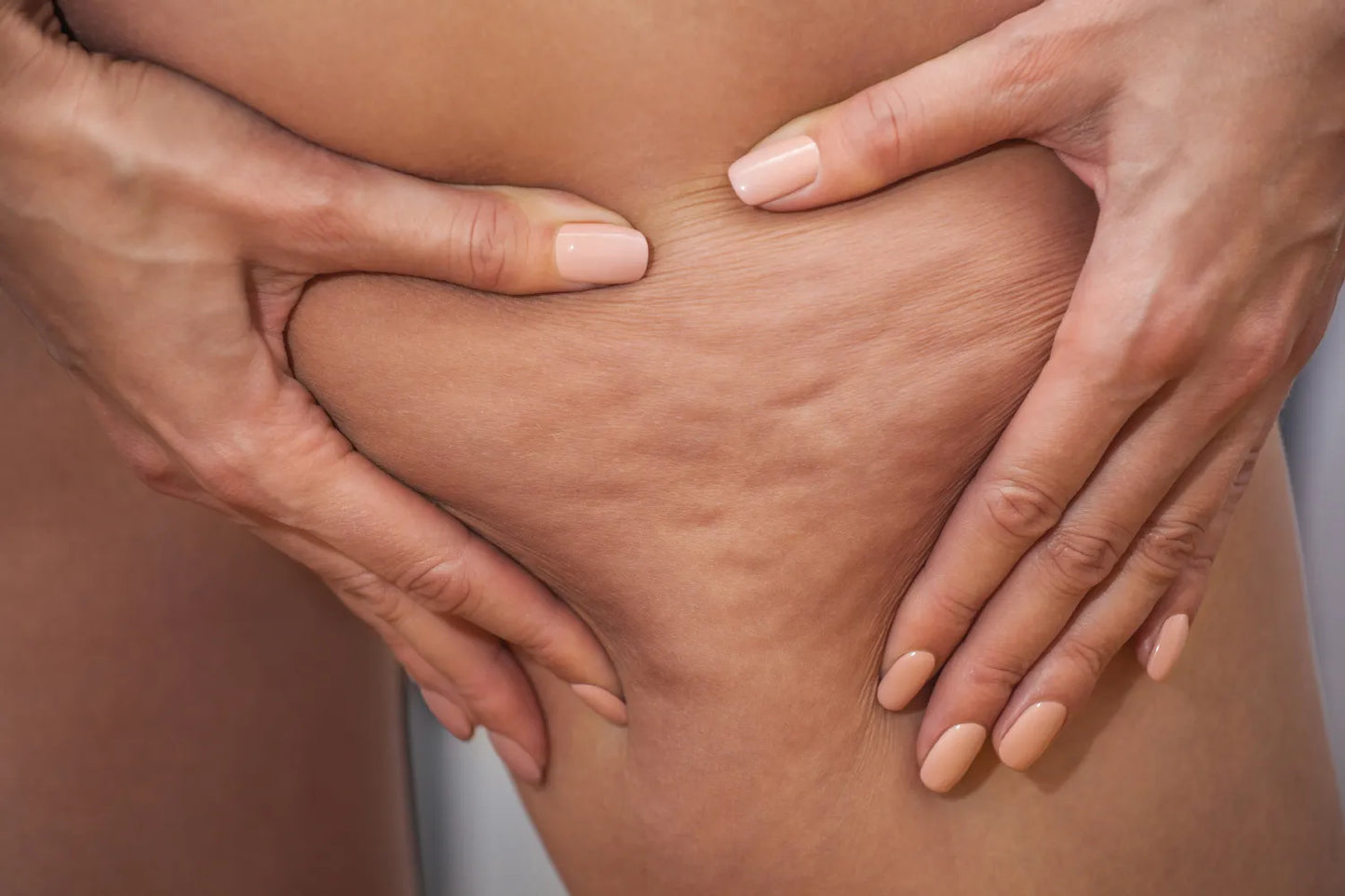
Red Light Therapy: Benefits, Risks and Uses
You’ve probably heard about red light therapy (RLT) before. After all, it’s a highly popular wellness trend that has steadily been growing in popularity over the years.
The origins of RLT can be traced back to the late 20th century when NASA first used LED technology to grow plants in space. Since then, its potential applications have expanded, venturing into the worlds of dermatology and general healthcare.
But what exactly is red light therapy, and why has it become such a hit? Let's unravel the mystery and shed some light on this intriguing topic.
What Is Red Light Therapy?
Red light therapy, sometimes referred to as low-level light therapy (LLLT), is a form of photobiomodulation. This innovative therapeutic treatment uses a light-emitting diode (LED) to deploy low-power red light wavelengths.
Think of it like taking a shower using red LEDs that bathe your body in a gentle, healing glow. While this may sound relaxing, there’s more to this treatment than meets the eye — but we’ll discuss that more in a bit.
Why Is Red Light Therapy So Popular?
The surge in RLT's popularity can be attributed to its appealing characteristics. For instance, it's non-invasive, doesn't involve drugs, and can address a wide variety of health conditions.
Not only that, but the advent of at-home RLT devices has made this therapy much more accessible, which has likely contributed to its growing popularity. It’s a trend that's hard to ignore when we're all seeking natural ways to feel our best.
How Does Red Light Therapy Work?
LED light therapy works by delivering specific wavelengths of light, including near-infrared light, to the skin. This light is absorbed by the mitochondria in your cells, the powerhouses that generate energy.
By doing so, RLM stimulates the production of ATP (adenosine triphosphate), essentially fueling your cells with more energy to operate at their best. It’s kind of like a “power-up” for each of the cells in your body.
What Are the Benefits of Red Light Therapy?
Isn't it fascinating how light, a natural phenomenon we experience every day, can offer so many health benefits? Red light therapy (RLT) is a great example of this, providing benefits that include supporting your skin's health to bolstering mental well-being.
Skin Health and Beauty
In the world of skincare and beauty, RLT is quickly becoming a popular choice due to its benefits for the skin.
These include:
- Improved collagen production: Collagen, the protein responsible for keeping our skin firm and youthful, tends to decrease as we age. RLT can help support and stimulate fibroblasts, the cells responsible for collagen production. As a result, collagen density is higher, helping to maintain skin elasticity and vibrancy.
- Wrinkle reduction: Unlike most of the anti-aging options out there, RLT has shown promising results for helping to turn back the clock on our skin. Its effects on collagen may contribute to skin rejuvenation by reducing the appearance of wrinkles and fine lines.
- Acne treatment: If you're struggling with acne, RLT might offer some relief. When combined with blue light therapy, it can help manage this common skin condition, reducing skin roughness and promoting clearer skin.
Pain Management
Red laser light treatments aren’t just for beauty — they’re also an effective tool for managing discomfort.
For instance, this therapy can help with:
- Tension soothing: By encouraging blood flow, RLT can help reduce tension within the body. It's a natural way to support your body's relaxation and recovery processes.
- Relieving muscle pain: Athletes and physiotherapists alike often use RLT to soothe sore muscles and support their recovery after intense activity. Whether you're an elite athlete or a weekend warrior, RLT could be a valuable addition to your recovery routine.
- Managing joint pain: Joint pain can significantly impact your quality of life. But don't worry — RLT may offer some relief. By promoting circulation and cellular repair, it can support joint health and help manage discomfort.
Wound Healing
When it comes to recovery from injuries, RLT could be your new best friend. Some clinical studies suggest that low-level laser therapies can support the body's natural wound healing response by promoting cell regeneration.
Mental Health
Maintaining mental well-being is just as important as physical health. Luckily, RLT can support this area, too.
Some people find that RLT can help manage symptoms of depression, potentially aiding in the management of stress. Plus, if you're one of the many people who struggle with sleep issues, RLT could offer a natural solution. RLT may help regulate sleep patterns by promoting relaxation and reducing stress, leading to more restful nights and more energetic days.
What Is Red Light Therapy Used For?
RLT is more than just a dermatologist's secret weapon — it's a highly versatile treatment option in various areas of health and wellness.
Here are a few ways it’s used in the medical community.
Medical Treatment
RLT is becoming an increasingly popular tool in the medical field.
For those dealing with chronic conditions, managing symptoms and maintaining a good quality of life can be challenging. RLT can be a supportive tool in this journey, offering a non-invasive way to support overall wellness.
RLT can also aid in post-surgery recovery by promoting cellular repair and reducing discomfort, potentially speeding up the healing process.
Physical Therapy
Whether you're recovering from an injury or surgery, RLT can support your rehabilitation efforts. By promoting circulation and cellular repair, it can aid in the recovery process and get you back on your feet sooner.
RLT can also be a valuable tool for athletes and those who like to stay active, helping to soothe sore muscles and support overall athletic performance.
Aesthetics and Wellness
If you're struggling with thinning hair, RLT might offer some hope. Some studies suggest that it could slow hair loss and even support hair growth, although more research is needed in this area.
And, while RLT isn't a magic bullet for weight loss, it can complement other approaches like a balanced diet and regular exercise. By promoting cellular metabolism, it can support your weight loss journey.
What Are the Risks and Side Effects of Red Light Therapy?
While red light therapy certainly has many benefits, it’s also important to stay informed about the risks and potential side effects.
Who Should Avoid Red Light Therapy?
Individuals with a history of skin cancer or certain eye conditions should consult with a healthcare provider before beginning RLT. It's always best to err on the side of caution and do your research to make sure this treatment is right for you.
Safety Precautions
When it comes to RLT, safety is essential to keeping your experience positive. The first thing you can do is always use eye protection during RLT sessions. The intense light can potentially damage your eyes if they're not adequately protected.
It’s also important to pay attention to your skin's response to RLT. If you notice any changes or irritation, it's best to stop using your device and consult with a healthcare provider or dermatologist.
Tips for Choosing the Right Red Light Therapy Device
Choosing the right red light therapy (RLT) device is important if you want to reap the maximum benefits. But with so many options on the market, how do you make the right choice?
Home vs. Professional Devices
When it comes to RLT devices, you have two main options: at-home devices and in-office ones.
At-home devices are typically more affordable and convenient, allowing you to enjoy RLT in the comfort of your own home. However, professional devices, like the ones found in spas, clinics, or dermatologist offices, may offer a more powerful treatment.
The best choice for you will depend on your specific needs, budget, and lifestyle.
FDA Approval and Regulations
Safety should be your top priority when choosing an RLT device. Look for devices that are FDA-approved, since this means that they meet very strict safety standards. The FDA guidelines also suggest that you should only use these devices once daily.
How To Use Red Light Therapy at Home
Using RLT at home can be a straightforward process, but it's important to follow the manufacturer's instructions that come with your device. Simply find a comfortable spot, make sure your skin is clean, and apply your device for the recommended amount of time.
Remember, more isn't always better. Overuse can lead to skin damage, so it's important to stick to the recommended treatment time.
The Takeaway
As you can see, RLT offers many benefits, from supporting skin health to managing discomfort and much more. It's a holistic, natural solution that aligns with the body's own healing mechanisms. However, as with any treatment, it's important to understand the potential risks and side effects and to use the therapy responsibly.
For more information on holistic health solutions, check out our blog. Here, you'll find a wealth of resources on topics ranging from nutrition to natural remedies and beyond.
Sources:
Red Light Therapy: Benefits, Side Effects & Uses | Cleveland Clinic
Photobiomodulation: The Clinical Applications of Low-Level Light Therapy | NCBI Bookshelf
NASA Research Illuminates Medical Uses of Light | NASA
Light-Based Therapies in Acne Treatment | PMC
Mechanisms and Applications of the Anti-Inflammatory Effects of Photobiomodulation | PMC
Effects of Low-Power Light Therapy on Wound Healing: LASER X LED | PMC
Red Light Therapy: Benefits, Side Effects And Uses | Forbes Health
Safety of Light Emitting Diode-Red Light on Human Skin: Two Randomized Controlled Trials | PMC
Home-Based Devices in Dermatology: a Systematic Review of Safety and Efficacy | PMC
The growth of human scalp hair mediated by visible red light laser and LED sources in males | PMC








